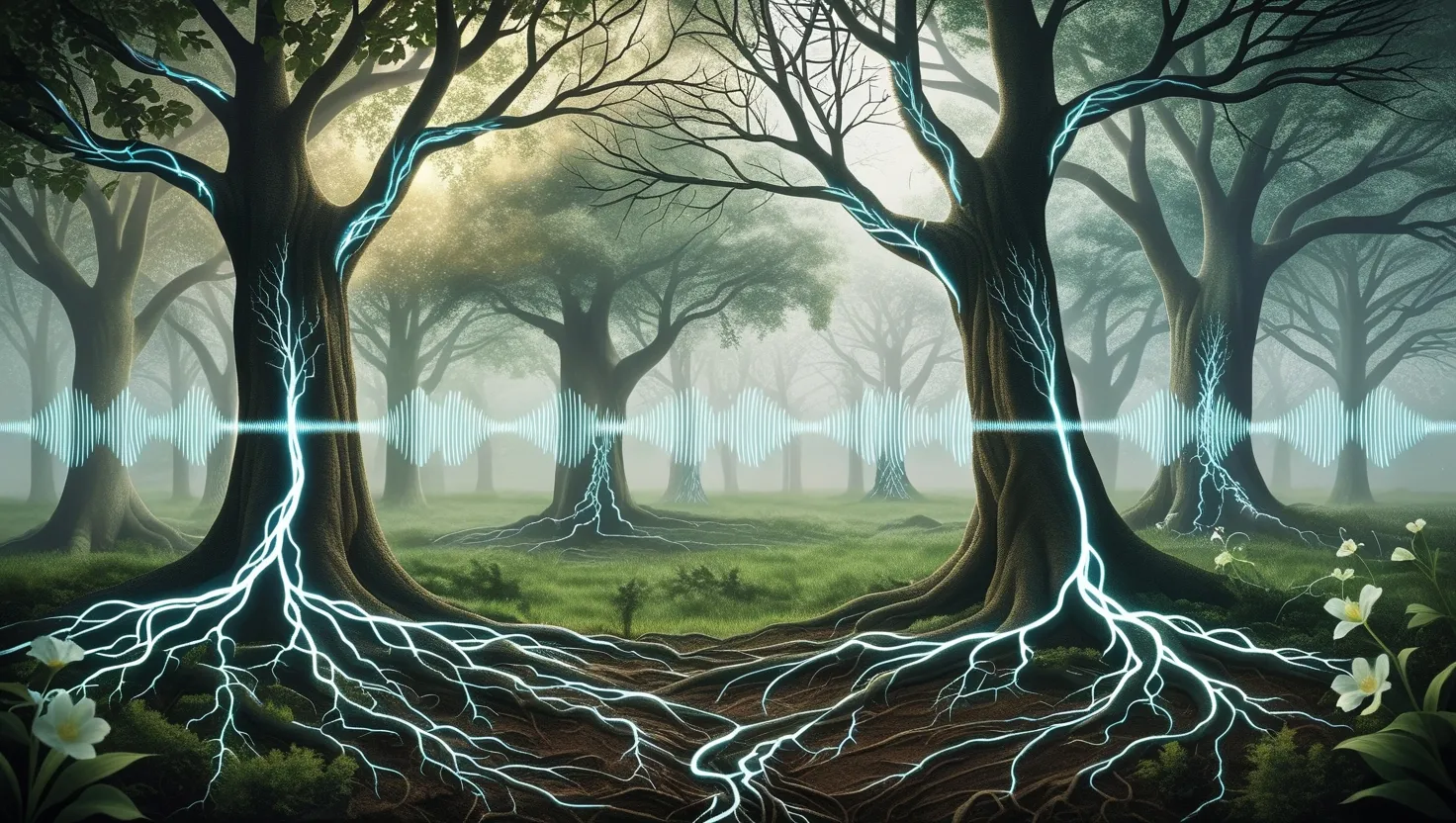When I look at plants—those silent fixtures shaping forests, prairies, city parks—I’m struck by how much we still don’t know. Plant science has come a long way, yet the more we examine, the stranger the familiar becomes. Let’s venture into the world of plants that behave in ways no textbook can fully explain. You might think of plants as stationary, predictable, even passive. But consider for a moment: What if trees whispered? What if roots heard music? What if battle strategies and synchronized dances thrived in roots and canopies? These aren’t fanciful questions—they’re challenges modern plant science can’t yet answer.
“The clearest way into the Universe is through a forest wilderness.” — John Muir
Let’s start in the high deserts of North America, where the Great Basin’s juniper trees perform an acoustic feat baffling researchers. During intense drought, these stunted, gnarly junipers emit ultrasonic pulses—bursts of sound too high for human ears but measurable with sensitive microphones. Even more curiously, whole groves erupt in synchrony, as though communicating their distress. If sound travels between them, what message passes from one hardy survivor to the next? Decades of study suggest no roots touch, no wind harmonizes these outbursts. It’s a reminder that some plant behaviors seem almost communal, hinting at a hidden language waiting to be translated.
Now picture vast Asian and African landscapes dotted with bamboo. Here, another phenomenon disturbs easy scientific explanations. Continental stretches of genetically identical bamboo—sometimes separated by mountains and rivers—flower all at once, then die en masse. This synchronized suicide occurs at intervals as long as 120 years. Known chemical signals don’t travel such distances, nor can environmental cues (like temperature or rainfall) account for the timing. Bamboo’s internal clocks appear to keep perfect time over lifespans that outlast several generations of most plants and animals. If you had to design a natural timekeeper, could you imagine one so precise, so patient?
“Look deep into nature, and then you will understand everything better.” — Albert Einstein
Our own experience with pain is often quick and localized. For plants, the story sometimes grows even stranger. When a single leaf of a mimosa or tomato plant is wounded, an electrical signal can race through tissue, warning distant leaves seconds before any physical damage arrives. These voltage changes pass faster than chemical messengers could ever diffuse. Why do plants need such rapid, whole-organism alerts? The entirety of a tree may brace for attack before the wind has carried a single spore or caterpillar onward. Scientists observe these spikes but can’t yet map the full highway of plant electricity—an internal messaging system more sophisticated than anyone expected in beings without nerves.
Have you ever walked a forest and glimpsed the narrow, even gaps between tree crowns? Some species display what’s called canopy “shyness”—a phenomenon where leaves and branches avoid touching those of their neighbors. From the ground, the effect resembles puzzle pieces that almost fit but never overlap. It’s not merely the result of wind or accidental brushing, as experiments show the gaps form even in windless, protected groves. The mechanism behind this polite distancing remains unclear. Do trees sense each other’s presence in some nonphysical way? What benefit does this spatial restraint provide when every photon of sunlight is precious?
“Nature always wears the colors of the spirit.” — Ralph Waldo Emerson
Plants move in time as well as space. The sensitive mimosa, famous for snapping its leaves closed when touched, sometimes folds its leaves in anticipation—hours before sunrise, without any obvious environmental cue. This behavior isn’t just a response to light or temperature. Even when kept in constant darkness, mimosa plants seem to anticipate daybreak, hinting at an internal timekeeping system more refined than any mechanism described so far. How do they know dawn is coming? The timing persists across countless generations in laboratory settings, as though each cell remembers a secret schedule.
Let’s consider the battlegrounds of meadows and fields, where plants engage in a kind of chemical warfare against their enemies. Some can identify not just that something is eating them, but precisely what is eating them. When under attack, they manufacture volatile chemicals tailored to specific herbivore species. Imagine if your skin could recognize a specific mosquito and release a unique compound to repel it, all in real time. How does a leaf “know” whether it’s being nibbled by a beetle or a caterpillar? The recognition system seems to go beyond surface cues or wounds—suggesting direct detection or even a rudimentary “memory” of invaders.
“The creation of a thousand forests is in one acorn.” — Ralph Waldo Emerson
Perhaps the most improbable behavior happens underground. Roots, groping blindly through the soil, have been observed seeking out—not water, not nutrients, but certain vibrations. In lab settings, plant roots grow towards muted bass notes or low-frequency sounds, even when no physical or chemical advantage is present. Standard models of plant physiology provide no clear candidate for a sensory organ capable of detecting vibration this subtle. Still, roots seem “attracted” to the hum, changing their direction and speed. What evolutionary purpose does this serve? If roots can “hear,” what else might they listen for beneath the earth?
Are we ready to accept that plants may possess, in their own way, a form of perception—perhaps even intelligence—distinct from, but not lesser than, animal senses? The more I reflect on these cases, the more I wonder: How much of nature’s complexity lies behind veils formed by our own expectations?
“If you look the right way, you can see that the whole world is a garden.” — Frances Hodgson Burnett
Plants process information, signal one another, and solve problems with an elegance that challenges human notions of decision-making. From vast synchronized deaths to invisible sonic conversations, from electric alarms to timekeeping beyond the reach of clocks, these living puzzles force us to reconsider what it means to sense and respond. Every time we discover a new plant behavior, we’re reminded that knowledge is provisional. Our models improve, but the universe remains more intricate and surprising than any neat explanation. Why do plants act together? How do they “know” without brains or nerves? Which cues—sound, touch, time, chemistry—are waiting for us to recognize?
Maybe the next great advance in understanding life won’t come from another animal or microbe, but from the silent, waiting green all around us. So let’s keep asking: What else have we missed in the patient lives of plants? And what might they still teach us about adaptation, survival, and the broader meanings of intelligence in the natural world?






